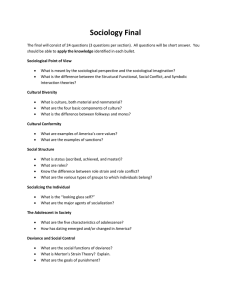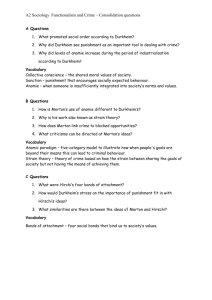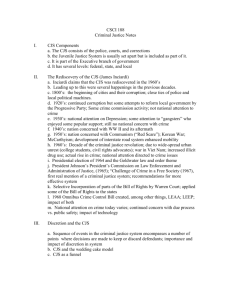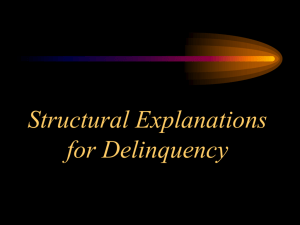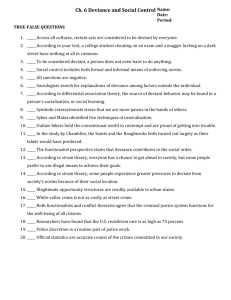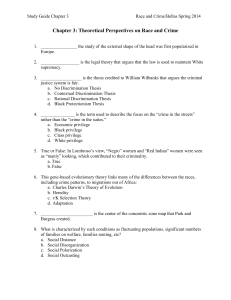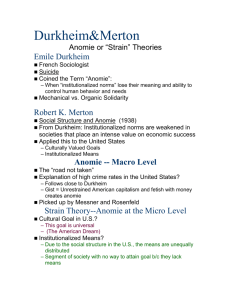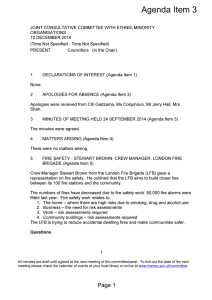Conflict Theory
advertisement
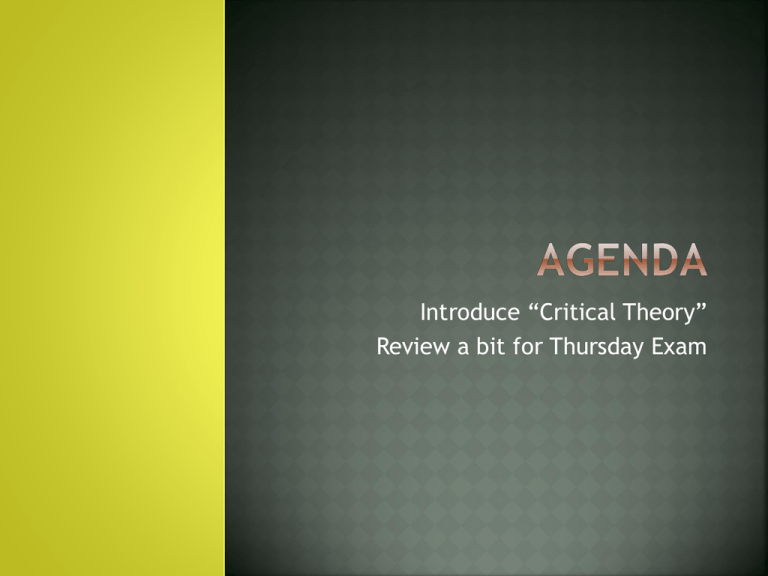
Introduce “Critical Theory” Review a bit for Thursday Exam Can’t we all just get along? In 1950-1960s = strain Policy = provide opportunity to those who lack means for achieving legitimate success. Turmoil of 1960s criminologists become more skeptical Politicians and other interests groups lack will to make real changes Cloward and Ohlin story Many groups actively oppose providing opportunities Law reflect shared belief about what is wrong Law resolves conflicts and maintains order The state is “neutral” Bias is temporary and unintentional Consensus Law is an end process in a conflict over values Bias is built into the law (winners punish losers) The state (CJS) responds to the needs of those in power (not neutral) Conflict Central Themes Emphasis on “inequality” and “power” Crime as “political” concept CJS serves interests of powerful Solution to crime is more equitable society EXPLANATION than crime OF LAW and CJ SYSTEM rather Why are some things defined as “criminal” whereas others are seen as “poor judgment” or “bad,” but not really criminal? The Housing Bubble and Great Recession as an example PBS Frontline Thursday What two things will you need? Psychology Freud Learning types and their implications Personality, defense mechanisms Classical conditioning Operant conditioning Social Learning/Cognitive Skills vs. Restructuring Personality IQ Sociological Social Structure Theory Chicago School and Social D Original, Sampson and friends Anomie and Strain Theories Merton, Agnew, Messner and Rosenfeld Social Process Social Learning/DA Sutherland, Akers, Sykes & Matza Social control Hirschi, G&H, S&L Labeling + updates Assumptions made about human nature (for sociological theory) Policy Implications Central Concepts Different Flavors of the theory Hirschi bonding vs. Gottfredson and Hirsch low self-control Agnew GST vs. Merton strain Unit of anaylsis Most are “individual” level theories, make note of the ones that are not

